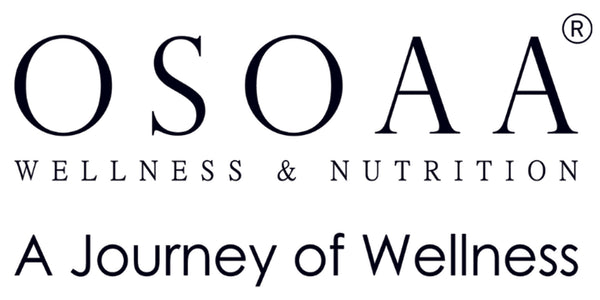Creatine is one of the popularly known sources of nutrition. If you’re into fitness, sports or any type of athletics, you’ve probably heard of Creatine. But the question is, do you really understand it?
If you’re curious about Creatine Monohydrate, this guide is for you!
BENEFITS OF TAKING OSOAA’S CREATINE MONOHYDRATE:
- 99.99% pure creatine with proven results
- 100% Creapure certified creatine monohydrate manufactured in Germany
- The production of Creapure is IFS FOOD certified, a quality standard recognized by the “Global Food Safety Initiative”
- Increases endurance and stamina
- Speeds up muscle recovery
- Increases muscle mass
- Improves strength and high-intensity exercise performance
- Increases mental performance and concentration
WHAT IS CREATINE?
Creatine is naturally produced in our bodies by the liver, pancreas, and kidneys. It also plays a vital role in muscle recovery and boosting brain functions. Creatine is a molecule found in animal foods. If you eat red meat and seafood, you’re getting more creatine in your diet than those who don’t. Although taking creatine is not essential, it can certainly be beneficial.
First, your muscles convert Creatine into Creatine phosphate, then it’s generated into adenosine triphosphate (ATP), which is used by your body while working out.
Let’s make this simpler.
Think of your body as a car, and ATP is the fuel that powers the engine. Creatine creates and recycles fuel. You really can’t move a car with no fuel in it, right? Now, that’s exactly where creatine comes in to play. It ensures that your body never runs out of fuel.
WHY DO WE NEED IT?
When you exercise you shed a lot of water, which leaves your body dehydrated and in order to recover from the intense muscle breakdown, you need creatine.
Creatine Monohydrate helps to retain water in your body and reduces muscle breakdown. It also boosts the water content of muscle cells and promotes muscle growth. It further helps to maximize your workout capacity which leads to better results.
Clearly, we’re starting to get a better idea of what creatine is. The bottom line is that it enhances your overall athletic performance safely.
HOW DOES IT WORK?
Your body needs energy to workout. While working out your body breaks down ATP for energy, and since the body's capacity to store ATP is limited, the body turns to either glucose or fatty acids for energy once the ATP is exhausted. This becomes counter-productive for us to achieve our fitness goals. This exactly where taking creatine monohydrate helps your body to recycle and regenerate ATP. It also ensures that you can work out for longer durations.
WHEN DO WE NEED TO TAKE CREATINE?
There is no defined schedule as to when to take creatine. Each body is different and unique, but it's recommended to take 3-5 grams of creatine monohydrate a day.
There are 3 commonly adopted methods of consuming creatine:
- Loading: involves taking 20 grams for the first week, then shift to consuming 5 grams a day.
- No loading: involves taking 3-5 grams per day, every day.
- Cycling: involves taking excess creatine for a short period of 4-8 weeks.
The first two methods show similar results, although loading seems to show faster results. Cycling is practiced often but doesn’t give you the desired effects.
Research also suggests that:
- Taking creatine with a mix of protein and carbohydrate can help increase muscle absorption
- Taking creatine after working out is slightly more effective for increasing muscle and strength than taking it before working out
This means if you’re looking to fully optimize your workout, then you’re better off taking creatine monohydrate along with your post-workout meal and not your pre-workout meal.
WHAT ARE THE RISKS OF TAKING CREATINE AND HOW TO AVOID THEM?
Many studies have confirmed that creatine monohydrate is safe to consume. It is one of the most researched supplements in the market.
Studies also suggest that taking too much creatine may be harmful to the kidney, or that it can cause injury, dehydration, or even stomach cramps. Staying hydrated is the key to stay healthy while taking creatine monohydrate. An average person consumes 3-4 liters of water per day, whereas, a person taking creatine must consume a minimum of 4-6 liters of water per day. Additionally, consuming creatine along with coffee, tea or herbal stimulants may have other serious health problems.
Now, why do people often think it’s risky to consume creatine? It’s either because they lack the necessary information, or they have been exposed to adulterated products that are easily available, nowadays. Most products in the market contain harmful ingredients which have serious repercussions in the long run.
WHAT MAKES US DIFFERENT?
Osoaa’s Creatine Monohydrate is the safest and the most reliable form, exclusively sourced from Germany. We guarantee you 100% Creapure certified creatine monohydrate without any adulteration. Creapure is the only creatine monohydrate that is IFS Food certified. It is a quality standard recognized by the Global Food Safety Initiative. Creapure is vegan and manufactured by chemical synthesis. Raw materials and intermediates are not derived from any animal or herbal products.
Have you checked your box of creatine at home? Does it have the Creapure seal?
We believe in 100% transparency, so what you see on the label is exactly what you get. While you focus on getting fit, we’ll ensure you have the finest quality of ingredients.
Now that you have pretty clear idea about creatine monohydrate and how it works. We hope that we answered all your questions and that you’re confident that Osoaa’s Creatine Monohydrate is the best choice for you!
SOURCE :
https://www.osoaa.in/


1 comment
I want a creatine